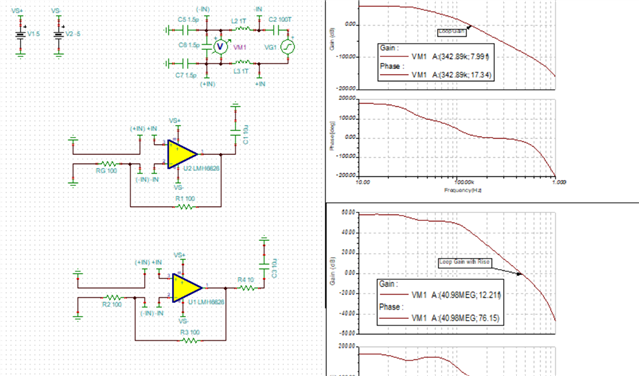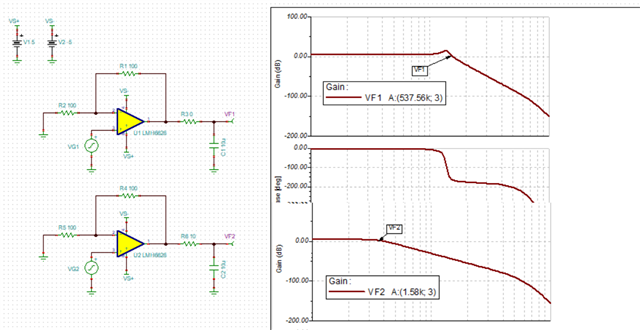Other Parts Discussed in Thread: LMH6628,
Tool/software:
Hello TI-Team,
we are using the LMH6628QML-SP in a space application. The LMH6628 generates/buffers an offset voltage and a CML voltage for a single to differential amplifier.
We have to implement a RC-Filter behind the output of the LMH6628 with R=10R and 10uF. Regarding Figure 23 in the datasheet SNOSAQ1B the capacitive load CL ends at 1nF in series with RS of 10 Ohms.
If it matters, the offset voltage is filtered with 10R/47nF (14 channels parallel) and CML voltage is filtered with 33R/100nF (14 channels parallel). The (second) filtering is directly at the inputs of the single to differential amplifier.
Q1: Are there any concerns/restrictions regarding the capacitive load (10uF)?
Q2: The input of the LMH6628 has no frequency as it is DC. What is in case of power up regarding the stability due to the high capacitive load.
Best Regards, Alessandro



